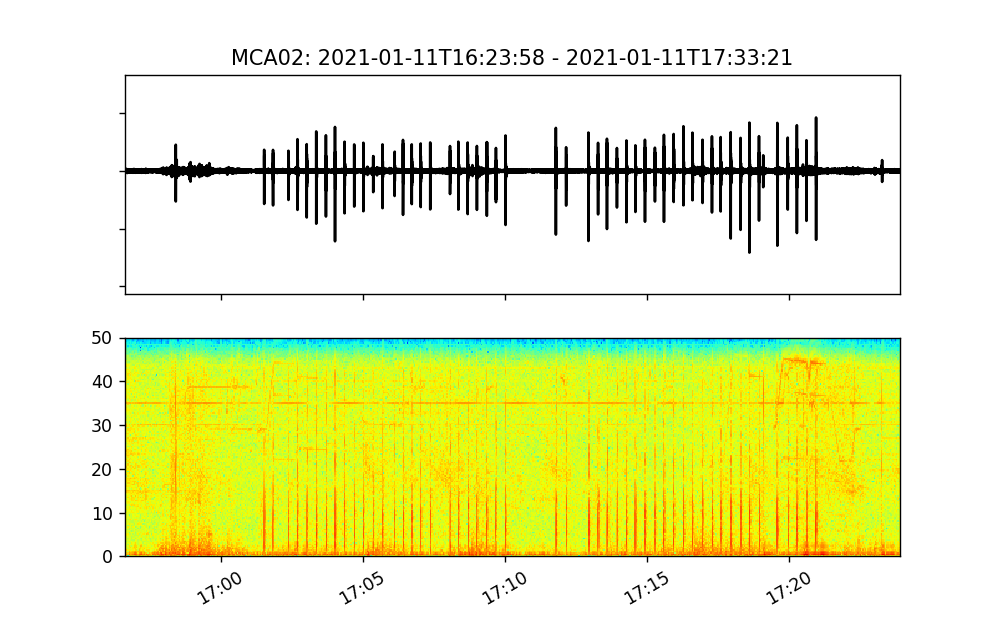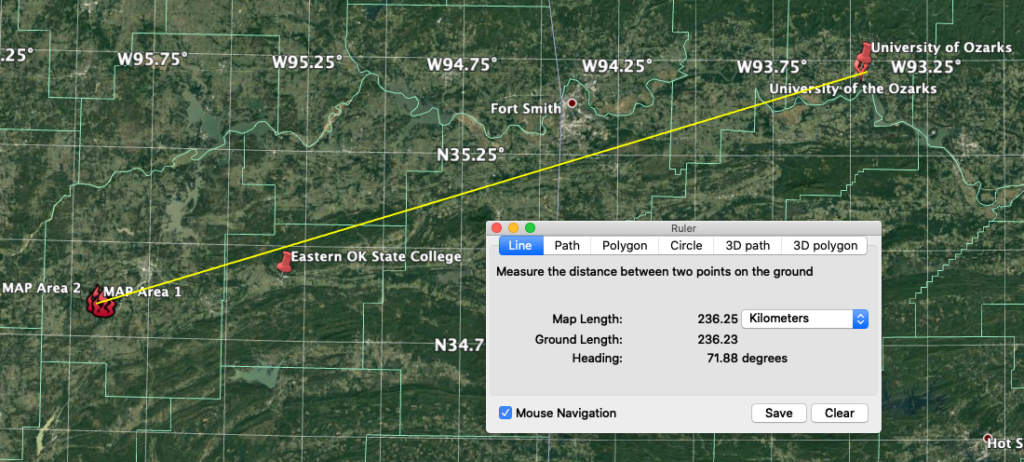We had a very early start on a cold January morning, but Miro (one of my graduate students), Gil (postdoc), and I heard and recorded over 50 explosions today as the US Army destroyed old munitions near McAlester, Oklahoma. We drove from Dallas, TX to Savanna, OK – a 2.5 hour drive – to install a small array of infrasound sensors adjacent to the McAlester Army Ammunition Plant (McAAP). A former colleague and friend from Los Alamos, Josh Carmichael, alerted me to this amazing infrasound source in Oklahoma (a great write up of his work can be found here). What got me and my group excited about this source is that it involves the routine detonation of ~50 explosions over short time intervals (~20 minutes). Because infrasound signals from these explosions can be observed at hundreds of kilometers (after refracting in the stratosphere), this unique source provides an opportunity to allow us to explore using infrasound to understand the atmosphere (in much the same way as seismic waves are used to understand the deep earth).
The sounds we heard today are shown in Figure 1 (each vertical spike is an explosion signal, and the y-axis in the top panel shows acoustic pressure). Since these signals were recorded adjacent to the facility, they tell us about the source itself. We also plan to measure signals at distances of ~50 and 250 km (Figure 2) in order to see what happens to the waves as they propagate through the middle atmosphere. This dataset should enable us to assess whether we can use the variation in the signals over a typical munitions disposal sequence to measure how the stratosphere changes over short time scales (~20 seconds – 20 minutes).

Gravity waves, which are the dominant source of atmospheric variation over these time scales, play a critical role in atmospheric dynamics, as they transport energy and momentum and can affect circulation patterns in the atmosphere. Their impact on the middle atmosphere is particularly significant, as this may play an important role in influencing the weather near the ground. Despite their importance, direct measurements of gravity waves in the middle atmosphere are limited. Recent analysis of infrasound data from the IMS and other networks have shown that infrasound can provide unique and important measurements of key gravity wave parameters (e.g., amplitude, frequency, and direction). The measurements of McAAP blasts further provide the opportunity to quantify how gravity waves can influence infrasound waves.

Hi Steven,
Very interesting! You do not say anything about the yields of the explosions… Could you tell more about this? And there is no vertical scale on the time series you show, nor the observation distance. I am curious 🙂
Hi Julien, the peak pressures at 50 km are about 3 Pa. I’m still working on retrieving the actual yields, but it is complicated because they are partially buried.